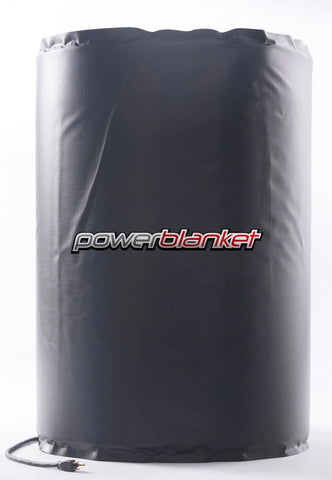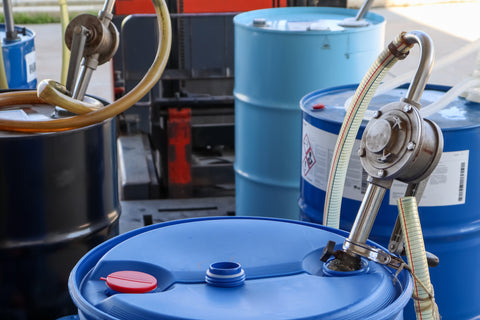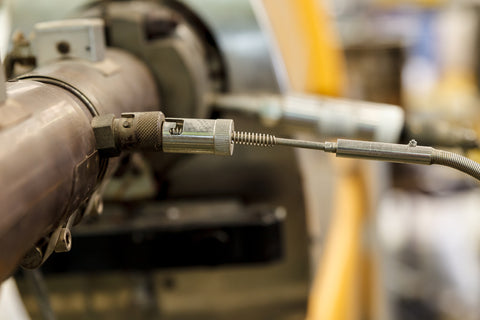A Guide to Heating a 55-Gallon Drum
Heating a drum is important for various purposes, such as melting wax, heating liquids and chemicals, and storage of materials that require a specific temperature range. This guide will provide detailed information on how to heat a drum safely and efficiently. The following sections will discuss how to determine your heating needs, choose the right heating method, and prepare the drum for heating. The guide will also provide a step-by-step process for heating a drum and important safety tips to remember. By the end of this guide, you will be equipped with the knowledge to safely and effectively heat a drum for your specific needs.
Determine Your Heating Needs
Heating a drum can be necessary in various industries and applications. Some common reasons for heating a drum include melting or heating of solids, liquids, or gases, processing of chemicals and oils, and regulating the temperature of industrial equipment.
Before choosing a heating method, one must consider the type of product contained within the drum and the desired temperature needed to achieve the desired effect. For instance, some products may require gentle heating over an extended period of time, while others may need rapid or intense heating to reach the required temperature.
Additionally, it’s crucial to identify the required temperature for the drum. This information is essential in determining the type and amount of heat source required. Failure to monitor and maintain proper temperatures could damage the drum, its contents or even pose safety risks.
In the next section, we'll explore various heating methods available to heat a drum.
Choose the Right Heating Method
When it comes to heating a drum, there are various methods to consider. Choosing the right method will depend on several factors, such as the desired temperature, the contents of the drum, and the available resources.
Some of the common methods of heating a drum include:
-
Direct Heating Direct heating is the most common method of heating a drum. It involves placing a heating source, such as a propane burner or an electric heating element, directly under or inside the drum. Direct heating is ideal for heating the contents of the drum quickly and efficiently.
-
Indirect Heating Indirect heating involves heating the drum indirectly using a heat transfer medium such as hot water or steam. This method is ideal for heating the drum's contents evenly and slowly. It is commonly used in industrial settings where precise temperature control is required.
-
Insulation Insulation is not a heating method per se but rather a way of retaining heat. Insulating a drum involves wrapping it with insulating material such as fiberglass or foam to prevent heat loss. Insulation is ideal if you want to keep the contents of the drum warm for an extended period.
When selecting the right heating method, it is essential to evaluate each method's advantages and disadvantages. For instance, direct heating is fast and efficient but may not be suitable for some types of contents. Similarly, indirect heating is precise and uniform but requires more resources and time.
Overall, it is essential to choose a heating method that suits your needs and requirements. Your choice of heating method will affect the overall efficiency and safety of the heating process. Therefore, it is crucial to select a method that is both safe and efficient.

Prepare The Drum For Heating
Before heating your drum, there are a few safety precautions to keep in mind. First, ensure that the drum is empty and free of any residue that may combust or catch fire. If the drum was previously used to store flammable substances, it must be cleaned thoroughly before heating.
It is also important to consider the type of drum you are using. There are various types of drums, including steel, plastic, and fiber drums. Each drum has different characteristics that must be taken into consideration when heating. For example, plastic drums may melt if heated too much, while steel drums may conduct heat differently depending on their thickness.
Once you have determined the type of drum you are using, you can prepare it for heating. The best way to do this is by using a drum heater. Drum heaters are specially designed to fit around the outside of the drum and provide even heat. They can be powered by electricity, gas, or steam, depending on the heating method you have chosen.
Before attaching the drum heater, make sure it is compatible with your type of drum and heating method. Follow the manufacturer's instructions carefully and ensure that the heater is securely fastened to the drum.
It is also important to monitor the temperature of the drum during heating. Use a thermometer to measure the temperature regularly and adjust the heating source as needed.
By following these steps, you can safely prepare your drum for heating and ensure that it is ready for the heating method of your choice.

Step-by-Step Guide for Heating a Drum
Now that you have determined your heating needs, chosen the right heating method, and prepared the drum for heating, it's time to start the heating process. Follow these steps for a successful heating process:
Step 1: Choose the Best Heating Method Based on your heating needs and the evaluation of different heating methods, choose the best heating method that fits your requirements. For example, if you need quick and efficient heating, an electric heater or an induction heater might be a good option.
Step 2: Prepare the Drum Before installing the heating source, ensure that the drum is clean and free of any flammable materials or residues. Also, make sure that the drum is not leaking.
Step 3: Install the Heating Source Follow the manufacturer's instructions and install the heating source as per the chosen heating method. For example, if you choose a propane heater, connect the propane tank, and light the heater as per the instructions.
Step 4: Monitor the Temperature It's essential to monitor the temperature of the drum regularly. Use a thermometer or a temperature controller to maintain the required temperature. Ensure that the temperature does not exceed the recommended limit to avoid any damage.
Step 5: Turn off the Heating Source Once the drum's contents reach the desired temperature, turn off the heating source and allow the drum to cool down before removing the contents.
Safety Tips When Heating Drums
Heating a drum can be dangerous if proper safety measures are not followed. Here are some safety tips to keep in mind:
- Ensure that the drum is not leaking or damaged before heating it.
- Always wear heat-resistant gloves and safety glasses when handling the drum or the heating source.
- Keep the area well-ventilated to avoid any buildup of flammable vapors.
- Never leave the drum unattended while heating.
- Always follow the manufacturer's instructions when using any heating source.
In conclusion, heating a drum is an essential process for various industries and purposes. By determining your heating needs, choosing the right heating method, and following the step-by-step guide, you can safely and efficiently heat your drum. Always remember to prioritize safety when handling heating sources, and you'll be on your way to achieving the desired result.







